- Understanding the Basics of Post-Impressionism
- Preparing Art Supplies for Your Post-Impressionism Painting
- Fundamental Post-Impressionism Art Techniques to Start With
- Step-by-Step Guide to Your First Post-Impressionist Painting
- Advanced Techniques for More Vibrant Post-Impressionism Paintings
- Inspiration and Ideas for Post-Impressionism Art Paintings
- Finishing and Displaying Your Post-Impressionism Art
- Embracing the Post-Impressionism Spirit in Your Art
- FAQs on Post-Impressionism
- Books for Further Study of Post-Impressionism
Paintings bursting with vibrant hues and characterized by expressive brushwork—welcome to the enchanting world of Post-ImpressionismPost-Impressionism is an art movement that emerged in France in the late 19th century, following the close of the Impressionist era. While it retained the vivid color palette and real-life subject matter of Impressionism, Post-Impressionism rejected its limitations by emphasizing a more structured, formal composition and greater emotional depth. This movement was not defined by a single aesthetic but represented More, a style many of us love.
But what if you could do more than just admire these masterpieces? What if you could create your own Post-Impressionist artwork?
This artistic movement, initiated around 1886, invites you to delve into the depths of emotional expression. Pioneers like Van Gogh, Cézanne, and Gauguin broke away from conventional techniques, opting for a more personal and evocative approach to painting. Why not open up this pathway to artists of all skill levels to explore their creative potential with accessible techniques?
This guide is designed to help you not only appreciate Post-ImpressionismPost-Impressionism is an art movement that emerged in France in the late 19th century, following the close of the Impressionist era. While it retained the vivid color palette and real-life subject matter of Impressionism, Post-Impressionism rejected its limitations by emphasizing a more structured, formal composition and greater emotional depth. This movement was not defined by a single aesthetic but represented More but also to create your own vibrant paintings. Get ready to mix colors, experiment with textures, and bring your artistic visions to life.
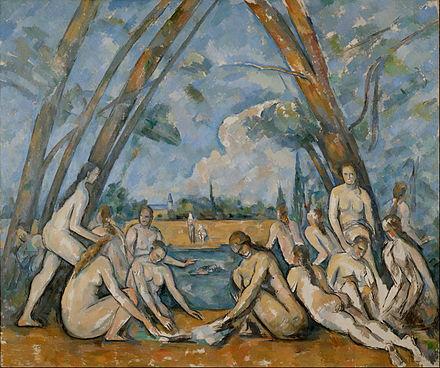
Understanding the Basics of Post-ImpressionismPost-Impressionism is an art movement that emerged in France in the late 19th century, following the close of the Impressionist era. While it retained the vivid color palette and real-life subject matter of Impressionism, Post-Impressionism rejected its limitations by emphasizing a more structured, formal composition and greater emotional depth. This movement was not defined by a single aesthetic but represented More
Let’s examine the distinctive features that define Post-ImpressionismPost-Impressionism is an art movement that emerged in France in the late 19th century, following the close of the Impressionist era. While it retained the vivid color palette and real-life subject matter of Impressionism, Post-Impressionism rejected its limitations by emphasizing a more structured, formal composition and greater emotional depth. This movement was not defined by a single aesthetic but represented More and explore how these elements distinguish it from other artistic movements.
Key Characteristics of Post-ImpressionismPost-Impressionism is an art movement that emerged in France in the late 19th century, following the close of the Impressionist era. While it retained the vivid color palette and real-life subject matter of Impressionism, Post-Impressionism rejected its limitations by emphasizing a more structured, formal composition and greater emotional depth. This movement was not defined by a single aesthetic but represented More
Post-Impressionism is a unique and expressive art form that emerged as a reaction against the naturalism of the Impressionists, focusing instead on more symbolic and abstract elements. This movement emphasizes the use of vivid colors, distinct brush strokes, and real-life subject matter, but with a twist that bends towards the emotional and personal response of the artist rather than a direct representation.
The key characteristics include:
- Vivid colors: Post-Impressionist artists opted for unnatural or exaggerated colors to convey a stronger emotional impact.
- Distinct brushstrokes: The brushstrokes in Post-ImpressionismPost-Impressionism is an art movement that emerged in France in the late 19th century, following the close of the Impressionist era. While it retained the vivid color palette and real-life subject matter of Impressionism, Post-Impressionism rejected its limitations by emphasizing a more structured, formal composition and greater emotional depth. This movement was not defined by a single aesthetic but represented More are often thick and visible, adding texture and depth to the painting.
- Attention to detail: While Impressionists often blurred their lines, Post-Impressionists focused more on clear forms to convey their artistic message.
- Geometric forms: Many Post-Impressionists used geometric forms to structure their compositions, subtly moving towards abstraction.
- Symbolic content: These artists frequently used their works to express symbolic stories or personal philosophies.
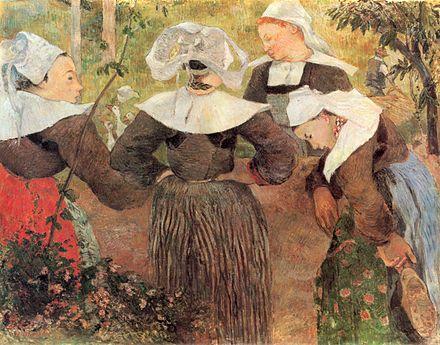
Influential Post-Impressionist Artists and Their Styles
Post-ImpressionismPost-Impressionism is an art movement that emerged in France in the late 19th century, following the close of the Impressionist era. While it retained the vivid color palette and real-life subject matter of Impressionism, Post-Impressionism rejected its limitations by emphasizing a more structured, formal composition and greater emotional depth. This movement was not defined by a single aesthetic but represented More is not defined by a single style but rather a variety of personal approaches to art. Some of the most influential Post-Impressionist artists, who each developed their unique styles, include:
- Vincent van GoghVincent van Gogh (1853 – 1890) is one of the renowned Post-Impressionist artists, best known for his striking use of colour, emphatic brushwork, and contoured forms. As a son of a pastor, the Dutch artist war brought up in a religious and cultured atmosphere. After working unsuccessfully as a clerk at a bookstore, as a salesman, and as a preacher More: Known for his emotive use of color and dynamic, swirling brushstrokes, van Gogh’s work is intense and packed with emotion.
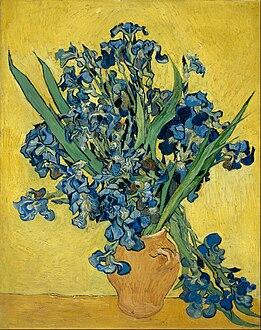
- Paul Gauguin: Gauguin is celebrated for his use of exotic themes and vivid colors. His style includes flat forms, strong outlines, and an emphasis on symbolic, rather than realistic, images.
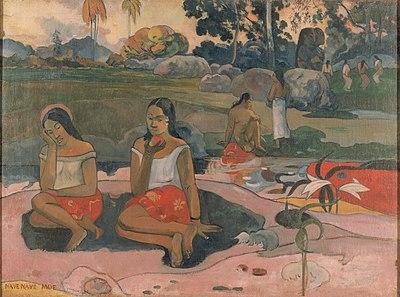
- Georges SeuratFrench artist Georges Seurat (1859 – 1891) is best known for his post-Impressionist style of Pointillism. He was born into an affluent family in Paris and educated in conventional academic painting at the École des Beaux-Arts, copying from old masters. After having attended military service, he further developed his unique style, which was influenced by the Impressionist use of colour More: A pioneer of pointillism, Seurat created images using tiny dots of color, an approach that emphasized the scientific theories of color and perception.
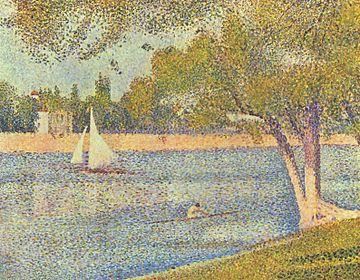
- Paul Cézanne: Cézanne developed a style known for its multiple perspectives and complex compositions, often dissecting the natural world into geometric forms.
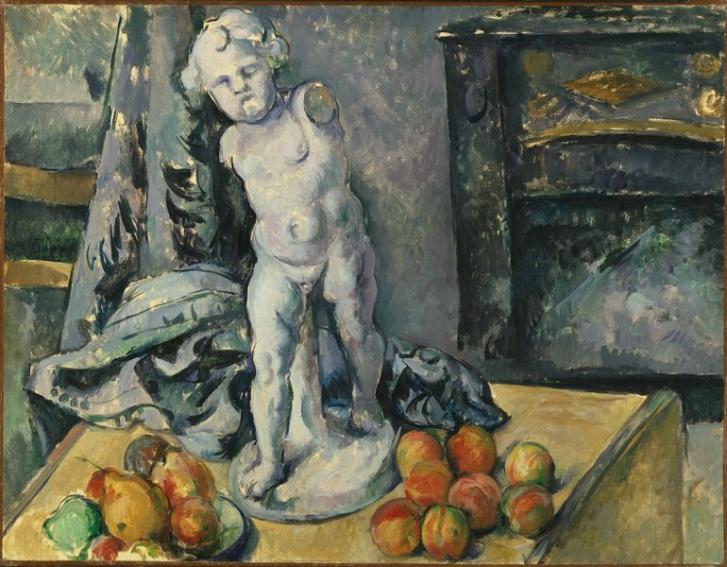
These artists and their distinctive approaches helped lay the groundwork for many modern art movements, making Post-ImpressionismPost-Impressionism is an art movement that emerged in France in the late 19th century, following the close of the Impressionist era. While it retained the vivid color palette and real-life subject matter of Impressionism, Post-Impressionism rejected its limitations by emphasizing a more structured, formal composition and greater emotional depth. This movement was not defined by a single aesthetic but represented More a bridge between traditional European painting techniques and the new era of abstract art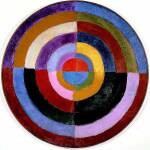 Abstract artworks diverge from depicting recognizable scenes or objects and instead use colors, forms, and lines to create compositions that exist independently of visual references from the natural world. This movement, which gained momentum in the early 20th century, was propelled by artists such as Wassily Kandinsky, Piet Mondrian, and Kazimir Malevich. These artists aimed to explore spiritual, emotional, and More. By understanding these artists and their styles, you can better appreciate the depth and diversity of Post-ImpressionismPost-Impressionism is an art movement that emerged in France in the late 19th century, following the close of the Impressionist era. While it retained the vivid color palette and real-life subject matter of Impressionism, Post-Impressionism rejected its limitations by emphasizing a more structured, formal composition and greater emotional depth. This movement was not defined by a single aesthetic but represented More and apply their techniques to your own artistic explorations.
Abstract artworks diverge from depicting recognizable scenes or objects and instead use colors, forms, and lines to create compositions that exist independently of visual references from the natural world. This movement, which gained momentum in the early 20th century, was propelled by artists such as Wassily Kandinsky, Piet Mondrian, and Kazimir Malevich. These artists aimed to explore spiritual, emotional, and More. By understanding these artists and their styles, you can better appreciate the depth and diversity of Post-ImpressionismPost-Impressionism is an art movement that emerged in France in the late 19th century, following the close of the Impressionist era. While it retained the vivid color palette and real-life subject matter of Impressionism, Post-Impressionism rejected its limitations by emphasizing a more structured, formal composition and greater emotional depth. This movement was not defined by a single aesthetic but represented More and apply their techniques to your own artistic explorations.
Preparing Art Supplies for Your Post-Impressionism Painting
Before you begin translating your vision onto canvas, having the right art supplies is crucial. This section will guide you through selecting the optimal paints, canvases, brushes, and additional tools necessary for exploring Post-ImpressionismPost-Impressionism is an art movement that emerged in France in the late 19th century, following the close of the Impressionist era. While it retained the vivid color palette and real-life subject matter of Impressionism, Post-Impressionism rejected its limitations by emphasizing a more structured, formal composition and greater emotional depth. This movement was not defined by a single aesthetic but represented More techniques.
Choosing the Right Post-ImpressionismPost-Impressionism is an art movement that emerged in France in the late 19th century, following the close of the Impressionist era. While it retained the vivid color palette and real-life subject matter of Impressionism, Post-Impressionism rejected its limitations by emphasizing a more structured, formal composition and greater emotional depth. This movement was not defined by a single aesthetic but represented More Art Paints
The choice of paint can significantly influence the outcome of your artwork. Historically, Post-Impressionists primarily used oil paints due to their thick texture and vibrant color, which are ideal for capturing the movement’s intense and emotive style. However, you can achieve similar results with acrylics, which offer the added advantage of faster drying times. Consider your color palette carefully; Post-Impressionist art is known for its vivid, sometimes unnatural colors. Experiment with various brands and types to find the ones that best suit your artistic needs and budget.
Our recommendation for the best oil paints for Post-Impressionist art:
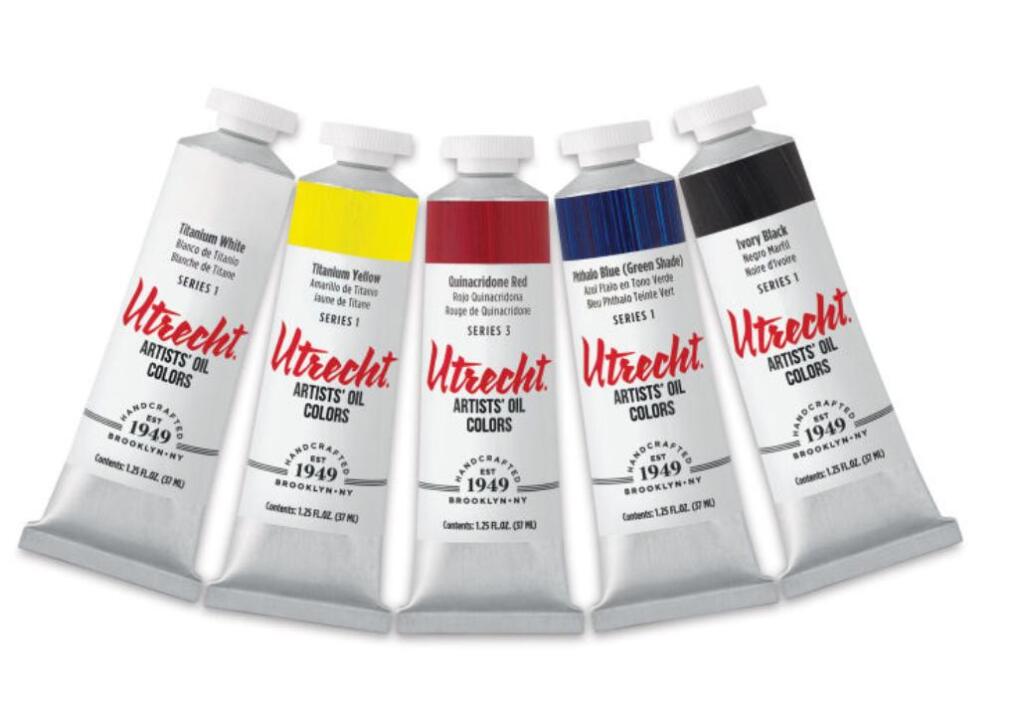
Utrecht Artists’ Oil Paints deliver professional-grade quality with brilliant colors, a buttery texture, and exceptional lightfastness. They are great for Post-Impressionist paintings since each tube provides vibrant hues and superb blendability, ensuring your artwork maintains its color integrity and performance over time. Ideal for artists who demand the best in longevity and color richness.
Our recommendation for the best acrylic paints for Post-Impressionist art:
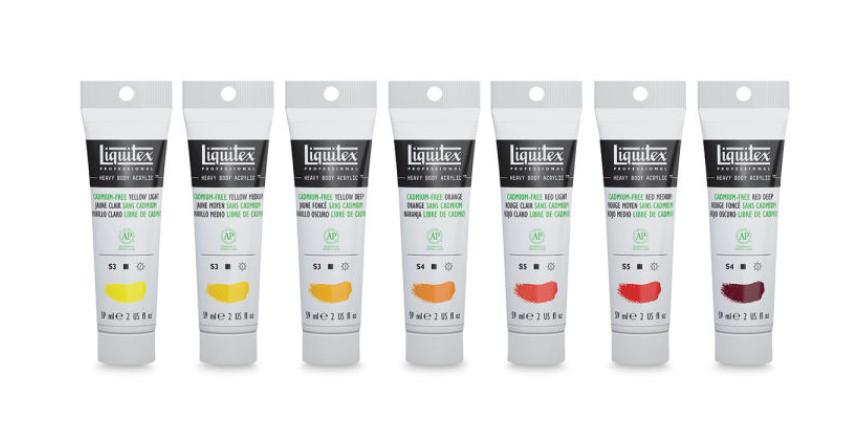
Liquitex Professional Heavy Body Acrylics offer a rich, buttery texture and a high pigment load for brilliant, permanent color. These acrylics provide excellent handling and blending properties with an extended working time. Ideal for both traditional and experimental art, they retain crisp textures when dry and are certified AP non-toxic.
Read more on the best acrylic paints.
Selecting Canvases for Optimal Post-Impressionism Aesthetic
The canvas serves as the foundation for your artistic expression. Choosing the right canvas is key, as it complements the type of paint you use and influences the overall texture and integrity of your finished work. A stretched cotton canvas is versatile and well-suited for both oil and acrylic paints, providing a responsive surface for the thick brushstrokes characteristic of Post-ImpressionismPost-Impressionism is an art movement that emerged in France in the late 19th century, following the close of the Impressionist era. While it retained the vivid color palette and real-life subject matter of Impressionism, Post-Impressionism rejected its limitations by emphasizing a more structured, formal composition and greater emotional depth. This movement was not defined by a single aesthetic but represented More. This type of canvas will hold up well under the layering and texturing techniques you’ll employ.
Our recommendation for the best canvases for Post-Impressionist paintings:
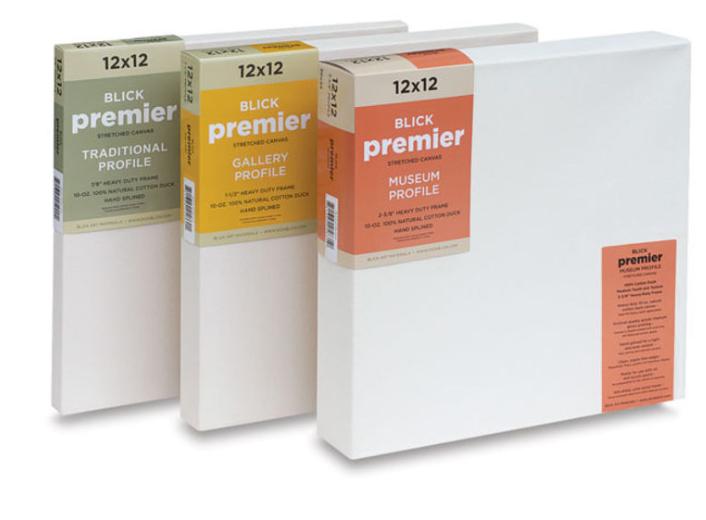
Blick Premier Stretched Cotton Canvas combines meticulous craftsmanship with superior materials. Each canvas is hand-woven and triple-primed with professional-grade, acid-free gesso, ensuring a smooth surface with optimal tooth for painting. Kiln-dried solid wood stretcher bars provide warp-resistance and stability, making these canvases ideal for both enthusiastic beginners and seasoned artists seeking quality at an affordable price.
Selecting Brushes Like Post-Impressionists
Brushes are the tools that translate your artistic vision onto the canvas. For Post-ImpressionismPost-Impressionism is an art movement that emerged in France in the late 19th century, following the close of the Impressionist era. While it retained the vivid color palette and real-life subject matter of Impressionism, Post-Impressionism rejected its limitations by emphasizing a more structured, formal composition and greater emotional depth. This movement was not defined by a single aesthetic but represented More, where variety in texture and detail is celebrated, having a diverse set of brushes is essential. Include brushes of different shapes (flat, round, filbert) and sizes to allow for broad strokes as well as intricate details. This variety will enable you to experiment freely and find unique ways to express emotion through paint.
Our recommendation for the best brushes for Post-Impressionist art:
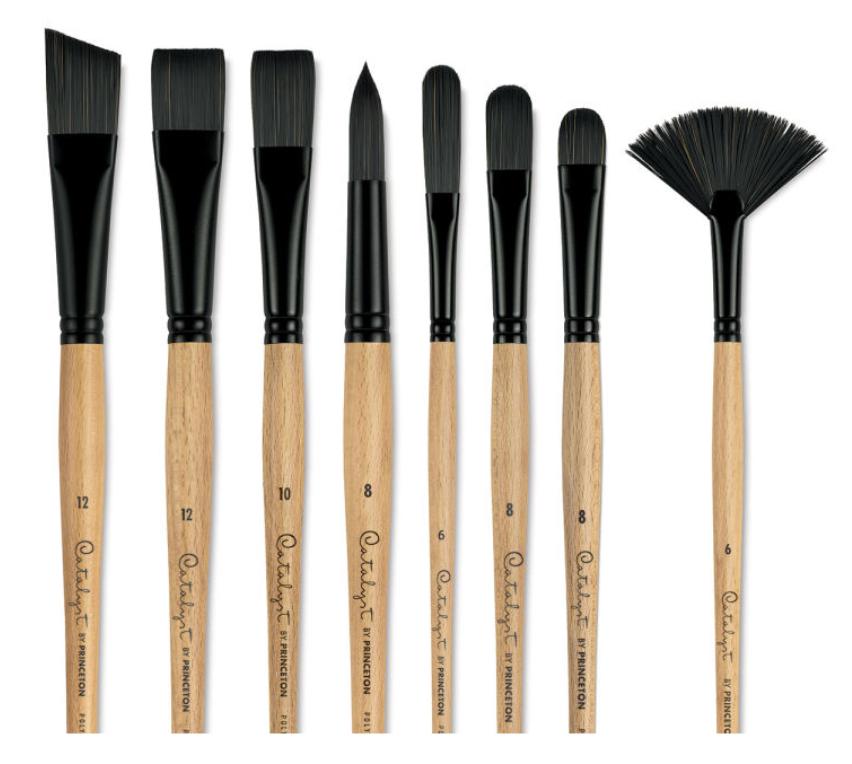
Princeton Catalyst Polytip Bristle Brushes feature innovative polytip bristles designed to mimic natural flags found in the finest hog bristle brushes. These brushes offer exceptional paint-holding capacity and smooth application, making them perfect for both oil and acrylics. Super stiff yet responsive, they excel with medium to heavy-body paints and even heavy gel mediums. Ideal for artists who demand versatility and durability in their painting tools.
Additional Tools for Special Post-Impressionist Art Techniques
When exploring Post-ImpressionismPost-Impressionism is an art movement that emerged in France in the late 19th century, following the close of the Impressionist era. While it retained the vivid color palette and real-life subject matter of Impressionism, Post-Impressionism rejected its limitations by emphasizing a more structured, formal composition and greater emotional depth. This movement was not defined by a single aesthetic but represented More, extending your toolkit beyond traditional paints and brushes can greatly enhance the textural possibilities of your artwork. Consider adding palette knives to your arsenal. These are not just for mixing paint on your palette; they are excellent for applying thick layers of paint directly to the canvas, creating bold textures and lines that are so characteristic of Post-ImpressionismPost-Impressionism is an art movement that emerged in France in the late 19th century, following the close of the Impressionist era. While it retained the vivid color palette and real-life subject matter of Impressionism, Post-Impressionism rejected its limitations by emphasizing a more structured, formal composition and greater emotional depth. This movement was not defined by a single aesthetic but represented More. The use of a palette knife can help you achieve the thick impasto effects seen in many iconic Post-Impressionist paintings.

Another valuable tool is the sponge. Sponges can be used to dab paint onto the canvas, allowing for unique texture effects and smooth gradation that can add depth and interest to your painting. Both palette knives and sponges encourage an experimental approach to applying paint, which is in keeping with the innovative spirit of Post-ImpressionismPost-Impressionism is an art movement that emerged in France in the late 19th century, following the close of the Impressionist era. While it retained the vivid color palette and real-life subject matter of Impressionism, Post-Impressionism rejected its limitations by emphasizing a more structured, formal composition and greater emotional depth. This movement was not defined by a single aesthetic but represented More.
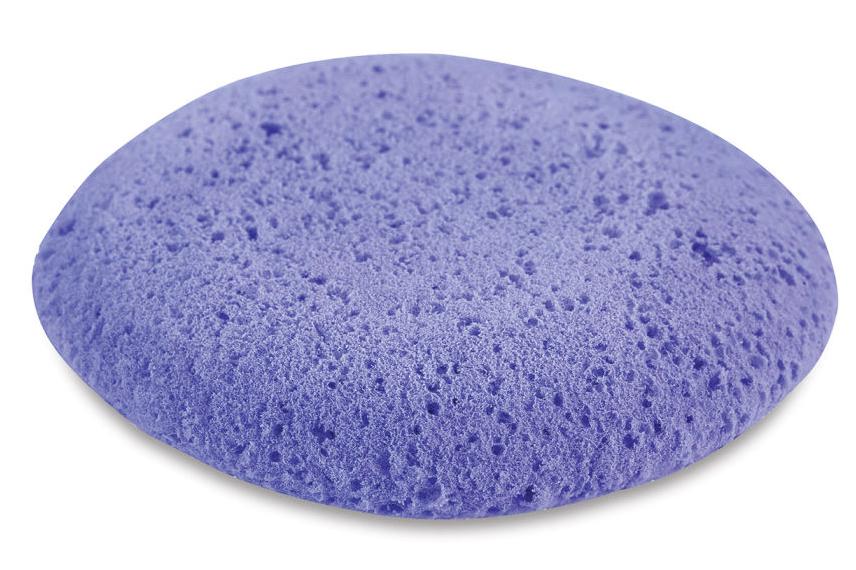
In addition to these textural tools, ensure your painting environment is optimized for creativity and comfort. A sturdy, good quality easel provides a reliable support for your canvas, allowing you to focus on the application of your techniques without worry. Adequate lighting is also crucial, as it affects how you perceive colors and details while you work. Natural light is ideal, but if that’s not available, a good daylight simulation lamp can make a significant difference, ensuring that the colors you choose and apply appear true to form and will look consistent in any setting.
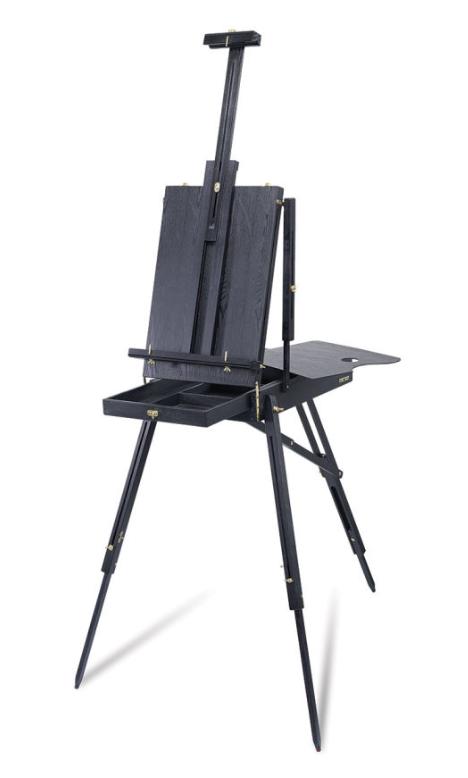
By expanding your toolkit and setting up a conducive workspace, you equip yourself not only with the means to replicate classic Post-Impressionist techniques but also the environment to innovate and create new interpretations of this beloved art style.
Fundamental Post-ImpressionismPost-Impressionism is an art movement that emerged in France in the late 19th century, following the close of the Impressionist era. While it retained the vivid color palette and real-life subject matter of Impressionism, Post-Impressionism rejected its limitations by emphasizing a more structured, formal composition and greater emotional depth. This movement was not defined by a single aesthetic but represented More Art Techniques to Start With
Mastering the foundational techniques of Post-ImpressionismPost-Impressionism is an art movement that emerged in France in the late 19th century, following the close of the Impressionist era. While it retained the vivid color palette and real-life subject matter of Impressionism, Post-Impressionism rejected its limitations by emphasizing a more structured, formal composition and greater emotional depth. This movement was not defined by a single aesthetic but represented More can open up new paths for creative expression. This section will guide you through the basics of brushworkMasterful brushwork is often the defining feature of great artists, where the brush becomes an extension of their arm, allowing paint to flow effortlessly onto the canvas. These artists demonstrate a profound understanding of their medium, knowing precisely when to apply thick, textured strokes or smooth, delicate ones. Their skill extends beyond mere color application; it's about the artistry of More, color theory, and the interplay of light and shadow, which are essential for capturing the essence of this art style.
Post-ImpressionismPost-Impressionism is an art movement that emerged in France in the late 19th century, following the close of the Impressionist era. While it retained the vivid color palette and real-life subject matter of Impressionism, Post-Impressionism rejected its limitations by emphasizing a more structured, formal composition and greater emotional depth. This movement was not defined by a single aesthetic but represented More BrushworkMasterful brushwork is often the defining feature of great artists, where the brush becomes an extension of their arm, allowing paint to flow effortlessly onto the canvas. These artists demonstrate a profound understanding of their medium, knowing precisely when to apply thick, textured strokes or smooth, delicate ones. Their skill extends beyond mere color application; it's about the artistry of More Basics for Texture
Post-Impressionist art is renowned for its vivid textures, achieved through deliberate, expressive brushstrokes. To start, familiarize yourself with different brush sizes and shapes. Experiment with strokes using the flat side, tip, and edge of brushes to see how each impacts the texture. Practice layering strokes to build depth and movement within your painting. Techniques like scumbling (brushing a lighter, usually opaque, layer of paint over a dried darker layer) can add complexity and richness to your artwork.
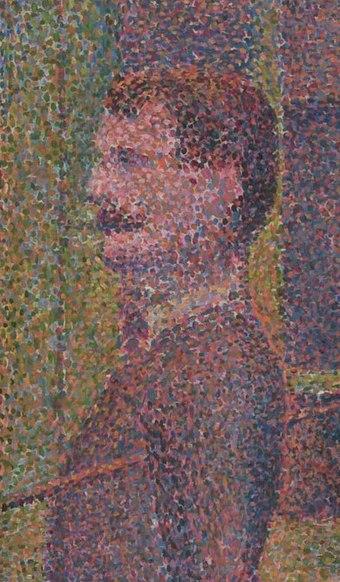
Color Theory in Post-ImpressionismPost-Impressionism is an art movement that emerged in France in the late 19th century, following the close of the Impressionist era. While it retained the vivid color palette and real-life subject matter of Impressionism, Post-Impressionism rejected its limitations by emphasizing a more structured, formal composition and greater emotional depth. This movement was not defined by a single aesthetic but represented More
Color is not just a visual element but an emotional one in Post-ImpressionismPost-Impressionism is an art movement that emerged in France in the late 19th century, following the close of the Impressionist era. While it retained the vivid color palette and real-life subject matter of Impressionism, Post-Impressionism rejected its limitations by emphasizing a more structured, formal composition and greater emotional depth. This movement was not defined by a single aesthetic but represented More. This movement employs color in unconventional ways to evoke mood and express deeper meanings. Begin by understanding the basics of the color wheel—identifying complementary, analogous, and contrasting colors. Post-Impressionists often use these relationships to create vibrant, dynamic compositions. Experiment with saturating colors beyond natural appearance for dramatic effect, and consider how color interactions can influence the viewer’s emotional response.
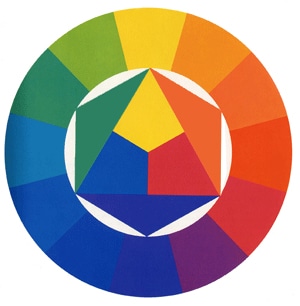
The Role of Light and Shadow in Post-ImpressionismPost-Impressionism is an art movement that emerged in France in the late 19th century, following the close of the Impressionist era. While it retained the vivid color palette and real-life subject matter of Impressionism, Post-Impressionism rejected its limitations by emphasizing a more structured, formal composition and greater emotional depth. This movement was not defined by a single aesthetic but represented More Art
In Post-ImpressionismPost-Impressionism is an art movement that emerged in France in the late 19th century, following the close of the Impressionist era. While it retained the vivid color palette and real-life subject matter of Impressionism, Post-Impressionism rejected its limitations by emphasizing a more structured, formal composition and greater emotional depth. This movement was not defined by a single aesthetic but represented More, light and shadow are not just used to depict realism but to enhance emotional impact and symbolic content. Observe how light can define shapes and add a sense of volume and weight to objects. Practice manipulating light and shadow to emphasize certain parts of your composition or to convey particular moods. Techniques such as chiaroscuro (the use of strong contrasts between light and dark) can be adapted to emphasize texture and depth, helping to bring your artistic visions to life with greater intensity.
These fundamental techniques provide the groundwork for your exploration of Post-ImpressionismPost-Impressionism is an art movement that emerged in France in the late 19th century, following the close of the Impressionist era. While it retained the vivid color palette and real-life subject matter of Impressionism, Post-Impressionism rejected its limitations by emphasizing a more structured, formal composition and greater emotional depth. This movement was not defined by a single aesthetic but represented More. Mastery of these aspects will not only improve your technical skills but also deepen your understanding of how Post-Impressionist artists communicate their unique perspectives through art.
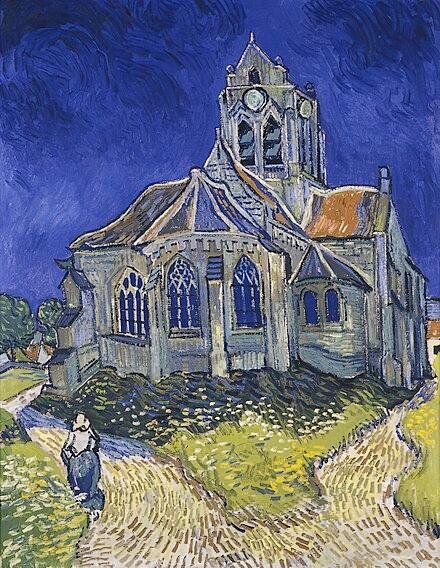
Step-by-Step Guide to Your First Post-Impressionist Painting
Taking on your first Post-Impressionist painting can be a thrilling experience. This section provides a structured approach, from the initial planning stages to the final touches, ensuring a thorough understanding and application of Post-Impressionist techniques.
Planning Your Post-ImpressionismPost-Impressionism is an art movement that emerged in France in the late 19th century, following the close of the Impressionist era. While it retained the vivid color palette and real-life subject matter of Impressionism, Post-Impressionism rejected its limitations by emphasizing a more structured, formal composition and greater emotional depth. This movement was not defined by a single aesthetic but represented More Art Composition
Begin by conceptualizing your artwork. Decide on a theme or subject that inspires you and consider how it can be expressed through Post-Impressionism’s emotive and vibrant style. Plan the layout of your painting by considering balance, proportion, and focal points. Create several thumbnail sketches to explore different arrangements and perspectives. This preliminary step helps solidify your vision before you commit to canvas, allowing for a more confident and purposeful application of paint.

Sketching and Underpainting Your Post-ImpressionismPost-Impressionism is an art movement that emerged in France in the late 19th century, following the close of the Impressionist era. While it retained the vivid color palette and real-life subject matter of Impressionism, Post-Impressionism rejected its limitations by emphasizing a more structured, formal composition and greater emotional depth. This movement was not defined by a single aesthetic but represented More Art
Once you’re done planning your composition, start sketching the basic outline directly onto your canvas. Use a light pencil or diluted paint that won’t bleed through subsequent layers. This sketch serves as a roadmap for your painting. Following the sketch, apply an underpainting using a monochrome or limited color palette. This layer helps establish values and tones across the composition, setting a solid foundation for subsequent layers of color.
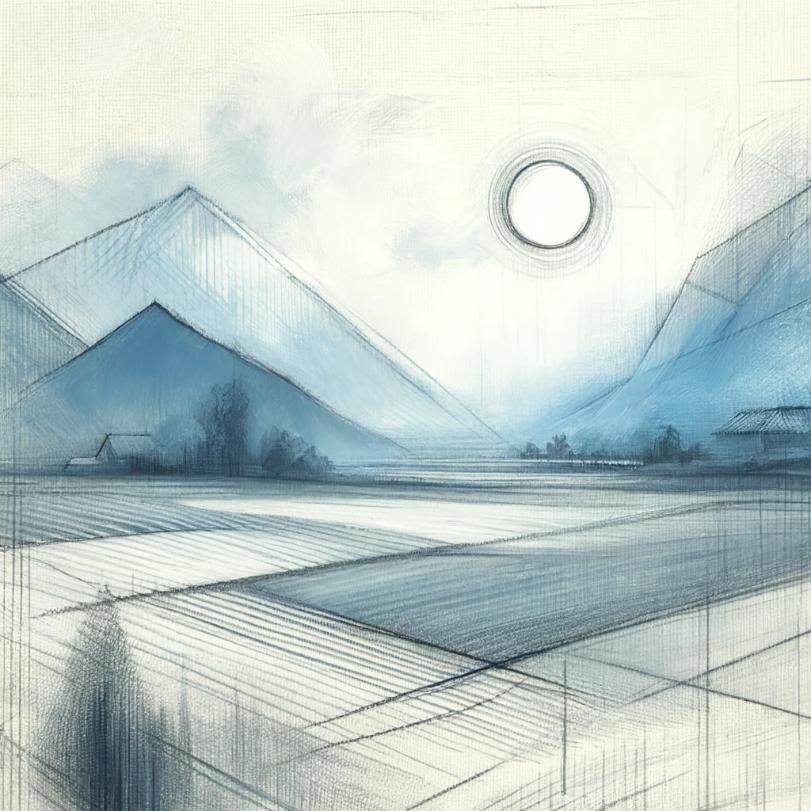
Layering Colors for Depth in Post-ImpressionismPost-Impressionism is an art movement that emerged in France in the late 19th century, following the close of the Impressionist era. While it retained the vivid color palette and real-life subject matter of Impressionism, Post-Impressionism rejected its limitations by emphasizing a more structured, formal composition and greater emotional depth. This movement was not defined by a single aesthetic but represented More Paintings
With the underpainting set, begin layering colors to build depth and richness in your painting. Start with large blocks of color to define the general palette, then gradually refine these areas with more specific hues and shades.
Use your understanding of color theory to enhance the interaction between colors, creating a vibrant tapestry on your canvas. Be mindful of the drying times of different paint layers, especially when working with oils or acrylics, to maintain the integrity of your colors and prevent muddying.

Adding Details and Textures in Post-ImpressionismPost-Impressionism is an art movement that emerged in France in the late 19th century, following the close of the Impressionist era. While it retained the vivid color palette and real-life subject matter of Impressionism, Post-Impressionism rejected its limitations by emphasizing a more structured, formal composition and greater emotional depth. This movement was not defined by a single aesthetic but represented More Art
As your painting progresses, shift your focus to adding details and textures that will bring your composition to life. Use various brushes and techniques like stippling, sgraffito, or impasto to introduce texture and detail. This final stage is about fine-tuning the elements within your painting, emphasizing important features, and reinforcing the overall emotional impact of the work. Remember, the details are what will capture and hold the viewer’s attention, making your artwork memorable.
This step-by-step guide will help you navigate the process of creating a Post-Impressionist painting, from the initial concept to the detailed execution, allowing you to effectively convey your artistic vision through vibrant colors and expressive techniques.
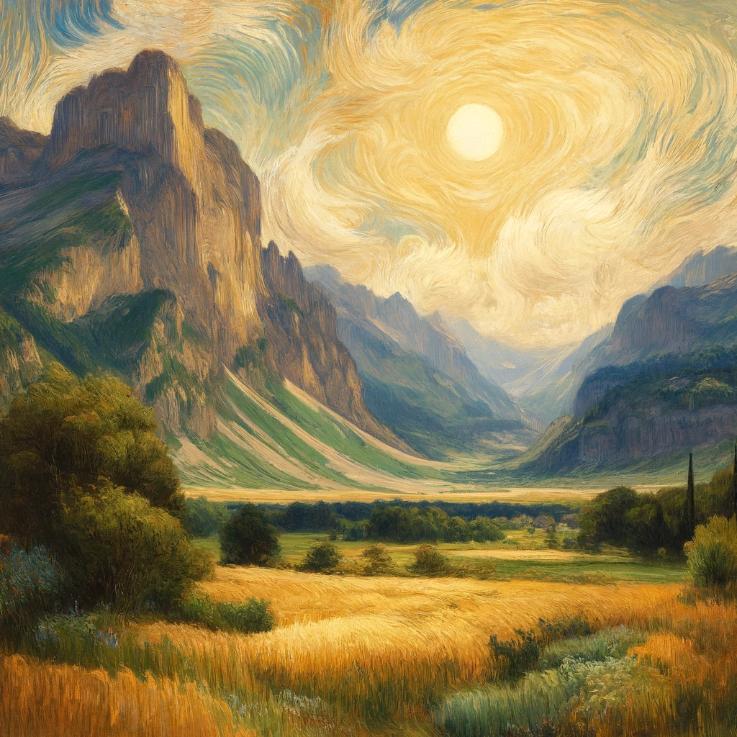
Close up:
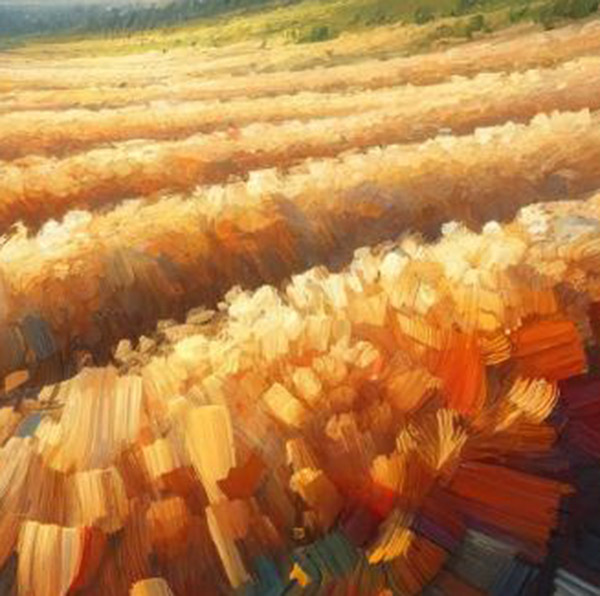
Advanced Techniques for More Vibrant Post-ImpressionismPost-Impressionism is an art movement that emerged in France in the late 19th century, following the close of the Impressionist era. While it retained the vivid color palette and real-life subject matter of Impressionism, Post-Impressionism rejected its limitations by emphasizing a more structured, formal composition and greater emotional depth. This movement was not defined by a single aesthetic but represented More Paintings
As you grow more comfortable with the basics of Post-ImpressionismPost-Impressionism is an art movement that emerged in France in the late 19th century, following the close of the Impressionist era. While it retained the vivid color palette and real-life subject matter of Impressionism, Post-Impressionism rejected its limitations by emphasizing a more structured, formal composition and greater emotional depth. This movement was not defined by a single aesthetic but represented More, you might want to explore some advanced techniques to add complexity and vibrancy to your paintings. These methods can help elevate your art, offering new ways to express your creativity and enhance your visual storytelling.
Experimenting with Palette Knife Painting
Palette knife painting is a fantastic way to add bold textures and striking visual effects to your artwork. Unlike brushes, palette knives can apply paint in thick layers, creating a sense of volume and movement that is perfect for the emotive style of Post-ImpressionismPost-Impressionism is an art movement that emerged in France in the late 19th century, following the close of the Impressionist era. While it retained the vivid color palette and real-life subject matter of Impressionism, Post-Impressionism rejected its limitations by emphasizing a more structured, formal composition and greater emotional depth. This movement was not defined by a single aesthetic but represented More. Experiment with different knife shapes and sizes to apply paint directly onto the canvas, sculpting it to create landscapes, figures, or abstract forms. This technique can give your paintings a fresh dynamism and a tactile quality that brushes alone cannot achieve.

Using Glazes to Enhance Vibrancy
Glazing is a technique where thin layers of transparent paint are applied over dry underlying layers, which can greatly intensify the colors and luminosity of a painting. By using glazes, you can adjust the tone and shade without obscuring the details beneath. This method is particularly useful for adding depth to your colors and creating a glowing effect that can make your artwork pop. Glazing requires patience and a good understanding of how colors interact, as the final outcome depends on the cumulative effect of layered hues.
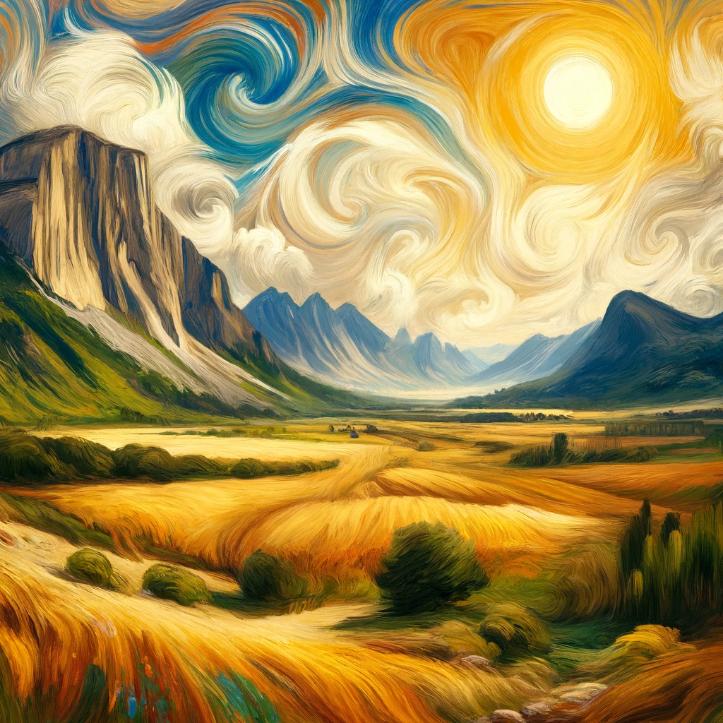
Incorporating Mixed Media
To further expand the expressive capabilities of your Post-Impressionist art, consider incorporating mixed media elements. This can include anything from collaging paper or fabric to adding elements like sand or small objects directly to the paint. Mixed media allows you to build up texture and form in innovative ways, offering a multi-dimensional aspect to your work that can engage viewers both visually and tactilely. It’s a playful and experimental approach that encourages you to think outside the traditional boundaries of paint on canvas, inspiring unique creative solutions.
These advanced techniques not only enrich the visual appeal of your paintings but also open up a myriad of possibilities for artistic expression. By integrating these methods into your Post-Impressionist works, you can push the boundaries of traditional painting and develop a distinctive style that truly stands out.
Inspiration and Ideas for Post-Impressionism Art Paintings
Finding inspiration for your Post-ImpressionismPost-Impressionism is an art movement that emerged in France in the late 19th century, following the close of the Impressionist era. While it retained the vivid color palette and real-life subject matter of Impressionism, Post-Impressionism rejected its limitations by emphasizing a more structured, formal composition and greater emotional depth. This movement was not defined by a single aesthetic but represented More art can be as rewarding as the painting process itself. This section will explore various themes and subjects that resonate with the Post-Impressionist style, along with insights into learning from the masters of the movement.

Themes and Subjects for Post-ImpressionismPost-Impressionism is an art movement that emerged in France in the late 19th century, following the close of the Impressionist era. While it retained the vivid color palette and real-life subject matter of Impressionism, Post-Impressionism rejected its limitations by emphasizing a more structured, formal composition and greater emotional depth. This movement was not defined by a single aesthetic but represented More
Post-ImpressionismPost-Impressionism is an art movement that emerged in France in the late 19th century, following the close of the Impressionist era. While it retained the vivid color palette and real-life subject matter of Impressionism, Post-Impressionism rejected its limitations by emphasizing a more structured, formal composition and greater emotional depth. This movement was not defined by a single aesthetic but represented More is flexible in terms of subject matter, offering a broad canvas for exploring various themes that reflect personal expression and emotional depth. Common themes include landscapes, still lifes, portraits, and everyday scenes, each infused with a unique perspective and vibrant coloration. Consider focusing on aspects of nature with exaggerated colors and forms to convey emotional responses. Urban scenes and social gatherings can also be depicted with a twist, emphasizing subjective impressions over realistic representation. Experiment with abstract themes where emotions and ideas are conveyed through shapes and colors rather than detailed imagery.

Learning from Famous Post-Impressionist Works
Studying the works of famous Post-Impressionist artists can provide valuable lessons in technique, composition, and color use.
Artists like Vincent van GoghVincent van Gogh (1853 – 1890) is one of the renowned Post-Impressionist artists, best known for his striking use of colour, emphatic brushwork, and contoured forms. As a son of a pastor, the Dutch artist war brought up in a religious and cultured atmosphere. After working unsuccessfully as a clerk at a bookstore, as a salesman, and as a preacher More, Paul Gauguin, and Georges SeuratFrench artist Georges Seurat (1859 – 1891) is best known for his post-Impressionist style of Pointillism. He was born into an affluent family in Paris and educated in conventional academic painting at the École des Beaux-Arts, copying from old masters. After having attended military service, he further developed his unique style, which was influenced by the Impressionist use of colour More each had unique approaches to their art, offering a wealth of inspiration. For instance, examine Van Gogh’s bold and dynamic brushworkMasterful brushwork is often the defining feature of great artists, where the brush becomes an extension of their arm, allowing paint to flow effortlessly onto the canvas. These artists demonstrate a profound understanding of their medium, knowing precisely when to apply thick, textured strokes or smooth, delicate ones. Their skill extends beyond mere color application; it's about the artistry of More in “Starry Night” to understand his technique for conveying intense emotion and movement. Look at Gauguin’s use of color in “Where Do We Come From? What Are We? Where Are We Going?” to see how he used vibrant, unconventional colors to depict symbolic narratives. Analyzing Seurat’s pointillism technique in “A Sunday Afternoon on the Island of La Grande Jatte” can inspire you to explore how small dots of color can blend to form detailed and luminous scenes.
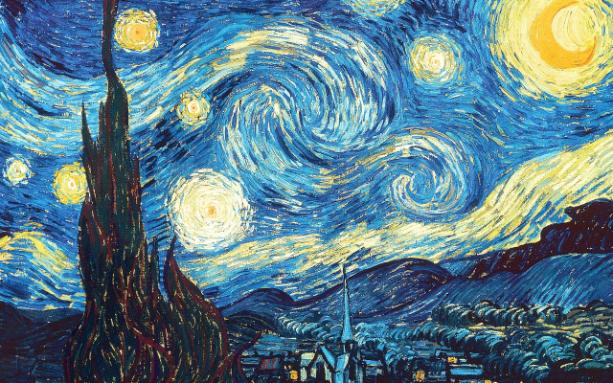
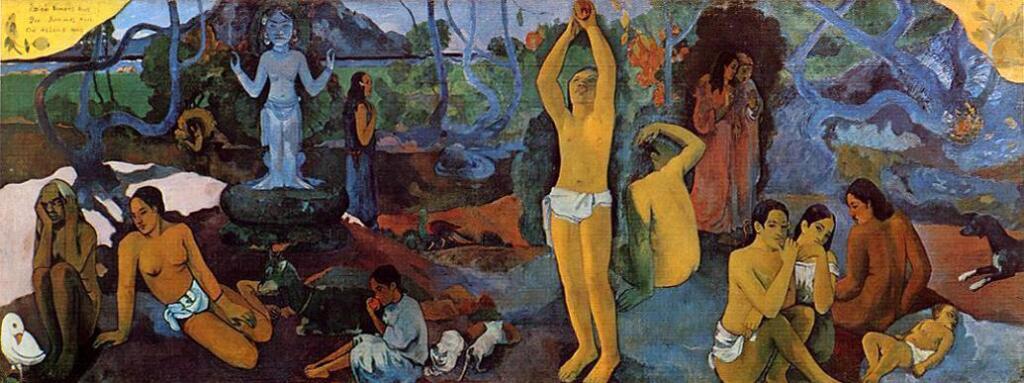

Drawing inspiration from these and other works, try to interpret what you learn into your style, keeping the essence of Post-ImpressionismPost-Impressionism is an art movement that emerged in France in the late 19th century, following the close of the Impressionist era. While it retained the vivid color palette and real-life subject matter of Impressionism, Post-Impressionism rejected its limitations by emphasizing a more structured, formal composition and greater emotional depth. This movement was not defined by a single aesthetic but represented More alive while adding your personal artistic signature. This ongoing dialogue with the past masters will not only deepen your understanding of the movement but also enhance your creativity and technical skills in painting.
Finishing and Displaying Your Post-ImpressionismPost-Impressionism is an art movement that emerged in France in the late 19th century, following the close of the Impressionist era. While it retained the vivid color palette and real-life subject matter of Impressionism, Post-Impressionism rejected its limitations by emphasizing a more structured, formal composition and greater emotional depth. This movement was not defined by a single aesthetic but represented More Art
After pouring your passion and creativity into your Post-Impressionist painting, the final steps involve sealing, framing, and displaying your artwork effectively. These measures not only protect your painting but also enhance its presentation, whether in a gallery, at home, or online.
Sealing and Protecting Your Post-ImpressionismPost-Impressionism is an art movement that emerged in France in the late 19th century, following the close of the Impressionist era. While it retained the vivid color palette and real-life subject matter of Impressionism, Post-Impressionism rejected its limitations by emphasizing a more structured, formal composition and greater emotional depth. This movement was not defined by a single aesthetic but represented More Painting
To ensure the longevity and durability of your artwork, it’s essential to seal and protect it once it’s fully dried. For oil paintings, you can apply a varnish to protect the surface from dust, UV rays, and environmental factors. It further enhances the vibrancy of the colors.
Acrylic paintings will benefit from a specialized acrylic sealer, which provides similar protection without altering the texture or finish of your work. Always test the sealer on a small, inconspicuous area first to ensure it doesn’t adversely affect the colors or texture of your painting.
Our recommendations for oil and acrylic varnishes:
Lascaux UV Protect Spray Varnish is a versatile, archival-quality varnish suitable for a variety of paints including oils, acrylics, watercolors, gouache, and pastels. Its UV-absorbing acrylic polymer formula provides superior protection, enhancing lightfastness and color intensity. This non-yellowing, water-resistant varnish dries clear, offering added durability and abrasion resistance.
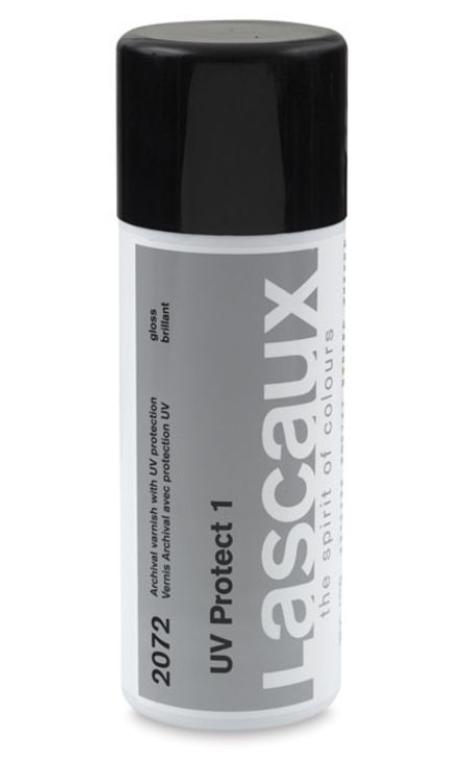
Liquitex Acrylic Varnish is specifically formulated for use with acrylic paints, providing a durable, permanent protective coating. Made from 100% acrylic polymer emulsion, this varnish offers excellent flexibility and resistance to chemicals, water, abrasion, and ultraviolet radiation. Available in Gloss, Matte, High Gloss, and Satin finishes, Liquitex Acrylic Varnish enhances and protects your acrylic artwork with a lasting shield.
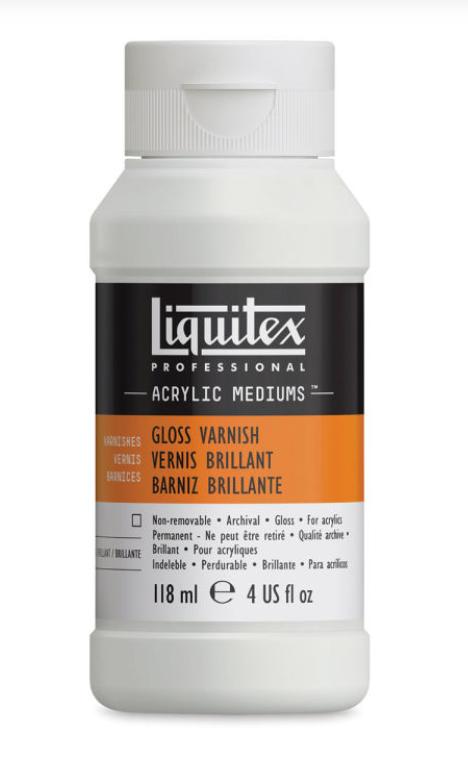
Framing and Hanging Tips for Post-ImpressionismPost-Impressionism is an art movement that emerged in France in the late 19th century, following the close of the Impressionist era. While it retained the vivid color palette and real-life subject matter of Impressionism, Post-Impressionism rejected its limitations by emphasizing a more structured, formal composition and greater emotional depth. This movement was not defined by a single aesthetic but represented More Art
Choosing the right frame can greatly complement your painting and integrate it into a specific space. For Post-Impressionist works, consider frames that echo the era of the art movement or opt for something minimalistic to let the vibrant colors and bold textures stand out. When hanging your artwork, make sure it’s at eye level to ensure optimal viewing. Use secure hanging fixtures, especially for larger or heavier pieces, to ensure safety and stability.
Photography Tips for Sharing Your Post-ImpressionismPost-Impressionism is an art movement that emerged in France in the late 19th century, following the close of the Impressionist era. While it retained the vivid color palette and real-life subject matter of Impressionism, Post-Impressionism rejected its limitations by emphasizing a more structured, formal composition and greater emotional depth. This movement was not defined by a single aesthetic but represented More Art Online
In today’s digital age, sharing your art online can reach a wide audience and open up professional opportunities. To accurately convey the quality and detail of your paintings, use natural, indirect light to avoid glare. A high-resolution camera or a smartphone with a good camera can capture the intricacies of your work. Take multiple shots from different angles to showcase the texture and depth of the painting. When editing, ensure the colors in the photo match those of the original artwork as closely as possible, adjusting exposure and saturation minimally.
By properly finishing, framing, and photographing your Post-Impressionist artwork, you not only preserve the quality of your painting but also enhance its presentation and accessibility to audiences both offline and online.
Embracing the Post-Impressionism Spirit in Your Art
As you continue exploring Post-ImpressionismPost-Impressionism is an art movement that emerged in France in the late 19th century, following the close of the Impressionist era. While it retained the vivid color palette and real-life subject matter of Impressionism, Post-Impressionism rejected its limitations by emphasizing a more structured, formal composition and greater emotional depth. This movement was not defined by a single aesthetic but represented More, remember that art is a channel for personal expression—there are no fixed rules, only suggestions to help bring your visions to life. Feel free to explore textures, colors, and forms. Let each brushstroke reflect a piece of your perspective and every color choice convey your emotions.
So, take these tools and insights, and apply them to your artistic process. Be bold, be curious, and most importantly, cherish the process of discovery and creation. This is your opportunity to transform blank canvases into vibrant expressions of your individual vision, following in the footsteps of the Post-Impressionist masters who reshaped the boundaries of art.
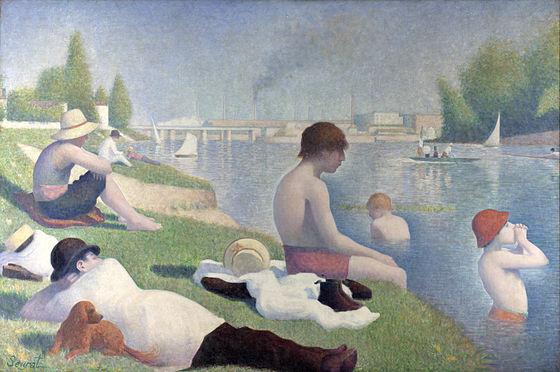
FAQs on Post-Impressionism
Q: What are key characteristics of the Post-ImpressionismPost-Impressionism is an art movement that emerged in France in the late 19th century, following the close of the Impressionist era. While it retained the vivid color palette and real-life subject matter of Impressionism, Post-Impressionism rejected its limitations by emphasizing a more structured, formal composition and greater emotional depth. This movement was not defined by a single aesthetic but represented More art movement?
A: The Post-ImpressionismPost-Impressionism is an art movement that emerged in France in the late 19th century, following the close of the Impressionist era. While it retained the vivid color palette and real-life subject matter of Impressionism, Post-Impressionism rejected its limitations by emphasizing a more structured, formal composition and greater emotional depth. This movement was not defined by a single aesthetic but represented More art movement is characterized by its rejection of the Impressionists’ prioritization of naturalism. Artists within this movement experimented with expressive color, geometric forms, and distorted figures to convey deeper emotional resonance. This period was marked by a rich exploration of symbolic content and abstract visual language.
Q: Who are some Post-ImpressionismPost-Impressionism is an art movement that emerged in France in the late 19th century, following the close of the Impressionist era. While it retained the vivid color palette and real-life subject matter of Impressionism, Post-Impressionism rejected its limitations by emphasizing a more structured, formal composition and greater emotional depth. This movement was not defined by a single aesthetic but represented More famous artists?
A: Among the most celebrated Post-ImpressionismPost-Impressionism is an art movement that emerged in France in the late 19th century, following the close of the Impressionist era. While it retained the vivid color palette and real-life subject matter of Impressionism, Post-Impressionism rejected its limitations by emphasizing a more structured, formal composition and greater emotional depth. This movement was not defined by a single aesthetic but represented More famous artists are Vincent van GoghVincent van Gogh (1853 – 1890) is one of the renowned Post-Impressionist artists, best known for his striking use of colour, emphatic brushwork, and contoured forms. As a son of a pastor, the Dutch artist war brought up in a religious and cultured atmosphere. After working unsuccessfully as a clerk at a bookstore, as a salesman, and as a preacher More, Paul Cézanne, and Georges SeuratFrench artist Georges Seurat (1859 – 1891) is best known for his post-Impressionist style of Pointillism. He was born into an affluent family in Paris and educated in conventional academic painting at the École des Beaux-Arts, copying from old masters. After having attended military service, he further developed his unique style, which was influenced by the Impressionist use of colour More. These individuals are known for their revolutionary approaches to art, which emphasized structural, symbolic elements over mere realistic representations. Their work has had a lasting impact on the course of art history, influencing countless artists and styles.
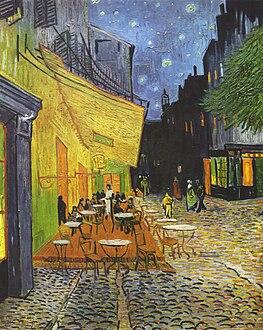
Q: What was the historical context of Post-ImpressionismPost-Impressionism is an art movement that emerged in France in the late 19th century, following the close of the Impressionist era. While it retained the vivid color palette and real-life subject matter of Impressionism, Post-Impressionism rejected its limitations by emphasizing a more structured, formal composition and greater emotional depth. This movement was not defined by a single aesthetic but represented More?
A: Post-ImpressionismPost-Impressionism is an art movement that emerged in France in the late 19th century, following the close of the Impressionist era. While it retained the vivid color palette and real-life subject matter of Impressionism, Post-Impressionism rejected its limitations by emphasizing a more structured, formal composition and greater emotional depth. This movement was not defined by a single aesthetic but represented More dates span from approximately 1886 to 1905, marking a crucial phase in the evolution of art towards modernismThe term Modernism refers to a global movement in society and culture which sought the departure from traditional forms of thinking in favour of the creation of new forms of art, philosophy, and social organisation. Reflecting the transformations in western society during the late 19th and early 20th centuries and the newly emerging industrial world provided the impetus to depart More. During this period, artists broke away from ImpressionismImpressionism was an art movement of the 19th century developed in France, based on the practice of painting spontaneously out-doors (“en plein air”) rather than in the studio. Key impressionist subjects were everyday scenes and landscapes, in which the momentary and transient effects of sunlight should be captured. The artists worked directly in front of their subjects, using rapid brushwork More and began experimenting with new approaches to color, form, and composition. This era is significant for its role in setting the stage for various modernist movements that reshaped the arts in the 20th century.
Q: How did Post-ImpressionismPost-Impressionism is an art movement that emerged in France in the late 19th century, following the close of the Impressionist era. While it retained the vivid color palette and real-life subject matter of Impressionism, Post-Impressionism rejected its limitations by emphasizing a more structured, formal composition and greater emotional depth. This movement was not defined by a single aesthetic but represented More influence modern art?
A: Post-ImpressionismPost-Impressionism is an art movement that emerged in France in the late 19th century, following the close of the Impressionist era. While it retained the vivid color palette and real-life subject matter of Impressionism, Post-Impressionism rejected its limitations by emphasizing a more structured, formal composition and greater emotional depth. This movement was not defined by a single aesthetic but represented More served as a pivotal bridge between Impressionist aesthetics and the various styles of modern art that followed. By emphasizing personal expression over realistic depiction, it challenged artists to think differently about color, form, and composition. This shift had a profound impact on subsequent artistic developments, paving the way for movements like CubismSynthetic cubism was the later period of the Cubist art movement generally dated from 1912 – 1919. Artists of Synthetic Cubism moved away from the multi-perspective approach of Analytical Cubism in favour of flattened images that dispensed allusions of the three-dimensional space. Pablo Picasso, Clarinet, Bottle of Bass, Newspaper, Ace of Clubs (2013) The approach of the analytical phase was More and FauvismThe Fauvism art movement applies to a group of modernist artists in the early 20th century including Henri Matisse and André Derain, who emphasized strong colour contrasts and painterly qualities with fierce brushwork over realistic values. Fauvism as a style started around 1904 and continued far beyond 1910. The group of Fauves however only worked together for the years between More.
Q: What techniques are prominent in Post-ImpressionismPost-Impressionism is an art movement that emerged in France in the late 19th century, following the close of the Impressionist era. While it retained the vivid color palette and real-life subject matter of Impressionism, Post-Impressionism rejected its limitations by emphasizing a more structured, formal composition and greater emotional depth. This movement was not defined by a single aesthetic but represented More still life paintings?
A: Post-ImpressionismPost-Impressionism is an art movement that emerged in France in the late 19th century, following the close of the Impressionist era. While it retained the vivid color palette and real-life subject matter of Impressionism, Post-Impressionism rejected its limitations by emphasizing a more structured, formal composition and greater emotional depth. This movement was not defined by a single aesthetic but represented More still life paintings are renowned for their vibrant palette and innovative use of texture, which bring mundane objects to life in new and exciting ways. Artists like Cézanne transformed still life painting by emphasizing the structural properties of shape and color over traditional realism. These techniques encouraged viewers to see ordinary objects from a new perspective, highlighting the beauty in everyday scenes.
Q: What are some lesser-known Post-ImpressionismPost-Impressionism is an art movement that emerged in France in the late 19th century, following the close of the Impressionist era. While it retained the vivid color palette and real-life subject matter of Impressionism, Post-Impressionism rejected its limitations by emphasizing a more structured, formal composition and greater emotional depth. This movement was not defined by a single aesthetic but represented More facts?
A: Some lesser-known Post-ImpressionismPost-Impressionism is an art movement that emerged in France in the late 19th century, following the close of the Impressionist era. While it retained the vivid color palette and real-life subject matter of Impressionism, Post-Impressionism rejected its limitations by emphasizing a more structured, formal composition and greater emotional depth. This movement was not defined by a single aesthetic but represented More facts include the movement’s significant influence on the design and aesthetic of early 20th-century art. Unlike their Impressionist predecessors, Post-Impressionists were not unified by a singular methodology but were rather a collection of individual artists with unique artistic visions. Additionally, this movement was instrumental in the development of art therapy, as its emphasis on emotional expression provided a new avenue for psychological exploration through art.
Q: How can I identify a painting from the Post-ImpressionismPost-Impressionism is an art movement that emerged in France in the late 19th century, following the close of the Impressionist era. While it retained the vivid color palette and real-life subject matter of Impressionism, Post-Impressionism rejected its limitations by emphasizing a more structured, formal composition and greater emotional depth. This movement was not defined by a single aesthetic but represented More art movement?
A: To identify a painting from the Post-ImpressionismPost-Impressionism is an art movement that emerged in France in the late 19th century, following the close of the Impressionist era. While it retained the vivid color palette and real-life subject matter of Impressionism, Post-Impressionism rejected its limitations by emphasizing a more structured, formal composition and greater emotional depth. This movement was not defined by a single aesthetic but represented More art movement, look for characteristics such as bold colors, distinct brushstrokes, and an emphasis on geometric forms. Post-Impressionist artists often used colors and shapes to express feelings and ideas rather than to replicate reality. The presence of emotional depth and symbolic elements, combined with a departure from precise realism, is a strong indicator of the Post-ImpressionismPost-Impressionism is an art movement that emerged in France in the late 19th century, following the close of the Impressionist era. While it retained the vivid color palette and real-life subject matter of Impressionism, Post-Impressionism rejected its limitations by emphasizing a more structured, formal composition and greater emotional depth. This movement was not defined by a single aesthetic but represented More style.

Q: What defines a Post-ImpressionismPost-Impressionism is an art movement that emerged in France in the late 19th century, following the close of the Impressionist era. While it retained the vivid color palette and real-life subject matter of Impressionism, Post-Impressionism rejected its limitations by emphasizing a more structured, formal composition and greater emotional depth. This movement was not defined by a single aesthetic but represented More art portrait?
A: A Post-ImpressionismPost-Impressionism is an art movement that emerged in France in the late 19th century, following the close of the Impressionist era. While it retained the vivid color palette and real-life subject matter of Impressionism, Post-Impressionism rejected its limitations by emphasizing a more structured, formal composition and greater emotional depth. This movement was not defined by a single aesthetic but represented More art portrait captures more than the external features of its subjects, focusing instead on expressing the inner emotional or psychological states through intense colors and exaggerated forms. This approach often results in portraits that are profoundly expressive, sometimes at the expense of realism. The goal is to delve deeper into the personality and mood of the person depicted, rather than merely capturing their physical appearance.
Q: What role do landscapes play in Post-ImpressionismPost-Impressionism is an art movement that emerged in France in the late 19th century, following the close of the Impressionist era. While it retained the vivid color palette and real-life subject matter of Impressionism, Post-Impressionism rejected its limitations by emphasizing a more structured, formal composition and greater emotional depth. This movement was not defined by a single aesthetic but represented More art?
A: Landscapes in Post-ImpressionismPost-Impressionism is an art movement that emerged in France in the late 19th century, following the close of the Impressionist era. While it retained the vivid color palette and real-life subject matter of Impressionism, Post-Impressionism rejected its limitations by emphasizing a more structured, formal composition and greater emotional depth. This movement was not defined by a single aesthetic but represented More art serve as more than scenic representations; they are platforms for artists to explore color, light, and symbolic content. Post-Impressionist landscapes often feature exaggerated colors and dramatic forms to evoke emotions and convey deeper meanings about nature and human experience. These landscapes challenge traditional perceptions and invite viewers to see the natural world through the artist’s unique perspective.
Q: How do Post-ImpressionismPost-Impressionism is an art movement that emerged in France in the late 19th century, following the close of the Impressionist era. While it retained the vivid color palette and real-life subject matter of Impressionism, Post-Impressionism rejected its limitations by emphasizing a more structured, formal composition and greater emotional depth. This movement was not defined by a single aesthetic but represented More artists manipulate texture?
A: Post-ImpressionismPost-Impressionism is an art movement that emerged in France in the late 19th century, following the close of the Impressionist era. While it retained the vivid color palette and real-life subject matter of Impressionism, Post-Impressionism rejected its limitations by emphasizing a more structured, formal composition and greater emotional depth. This movement was not defined by a single aesthetic but represented More artists manipulate texture by layering thick applications of paint, using varied brushstrokes, and sometimes incorporating non-traditional materials into their canvases. Techniques such as impasto, where paint is applied heavily to create texture that is visible and tactile, are common. These methods enhance the visual and emotional impact of their paintings, making the surface dynamic and engaging.
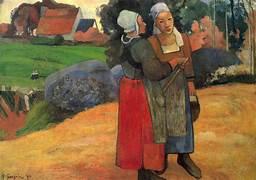
Q: Can Post-ImpressionismPost-Impressionism is an art movement that emerged in France in the late 19th century, following the close of the Impressionist era. While it retained the vivid color palette and real-life subject matter of Impressionism, Post-Impressionism rejected its limitations by emphasizing a more structured, formal composition and greater emotional depth. This movement was not defined by a single aesthetic but represented More art incorporate modern themes?
A: Yes, Post-ImpressionismPost-Impressionism is an art movement that emerged in France in the late 19th century, following the close of the Impressionist era. While it retained the vivid color palette and real-life subject matter of Impressionism, Post-Impressionism rejected its limitations by emphasizing a more structured, formal composition and greater emotional depth. This movement was not defined by a single aesthetic but represented More art can certainly incorporate modern themes, as the movement’s core principles of emotional depth and subjective perspective are timeless. Contemporary artists often adapt Post-Impressionist techniques to reflect modern-day concerns and aesthetics, blending historical styles with current themes. This fusion creates vibrant, thought-provoking art that bridges past and present.
Books for Further Study of Post-ImpressionismPost-Impressionism is an art movement that emerged in France in the late 19th century, following the close of the Impressionist era. While it retained the vivid color palette and real-life subject matter of Impressionism, Post-Impressionism rejected its limitations by emphasizing a more structured, formal composition and greater emotional depth. This movement was not defined by a single aesthetic but represented More
If you are looking to delve deeper into the theoretical and historical aspects of Post-ImpressionismPost-Impressionism is an art movement that emerged in France in the late 19th century, following the close of the Impressionist era. While it retained the vivid color palette and real-life subject matter of Impressionism, Post-Impressionism rejected its limitations by emphasizing a more structured, formal composition and greater emotional depth. This movement was not defined by a single aesthetic but represented More, we highly recommend the following books:
Parsons, T., & Gale, I. (1999). Post-ImpressionismPost-Impressionism is an art movement that emerged in France in the late 19th century, following the close of the Impressionist era. While it retained the vivid color palette and real-life subject matter of Impressionism, Post-Impressionism rejected its limitations by emphasizing a more structured, formal composition and greater emotional depth. This movement was not defined by a single aesthetic but represented More: The Rise of Modern Art, 1880-1920.
Lewis, M. T. (Ed.). (2007). Critical Readings in Impressionism and Post-ImpressionismPost-Impressionism is an art movement that emerged in France in the late 19th century, following the close of the Impressionist era. While it retained the vivid color palette and real-life subject matter of Impressionism, Post-Impressionism rejected its limitations by emphasizing a more structured, formal composition and greater emotional depth. This movement was not defined by a single aesthetic but represented More: An Anthology. University of California Press.
Brodskaïa, N. (2019). Post-ImpressionismPost-Impressionism is an art movement that emerged in France in the late 19th century, following the close of the Impressionist era. While it retained the vivid color palette and real-life subject matter of Impressionism, Post-Impressionism rejected its limitations by emphasizing a more structured, formal composition and greater emotional depth. This movement was not defined by a single aesthetic but represented More.
You might also enjoy reading the following articles by Pigment Pool:
Difference between Impressionism and Post-Impressionism: Art History Insights
Impressionism and Japonisme: How Japan Has Inspired Western Artists
Trailblazing Pop Art: Female Artists from Iconic Pioneers to Emerging Voices
The Legacy of Jackson Pollock: Art, History and Identity
The Best Watercolor Paint Set for Artists and Hobbyists In 2024
The Best Acrylic Paint Set for Artists and Hobbyists In 2024
Fine Art, Finer Returns: Building a Solid Art Investment Strategy in 2024
This article may contain compensated links. Please read Disclaimer for more info. As an Amazon Associate, I earn from qualifying purchases.
